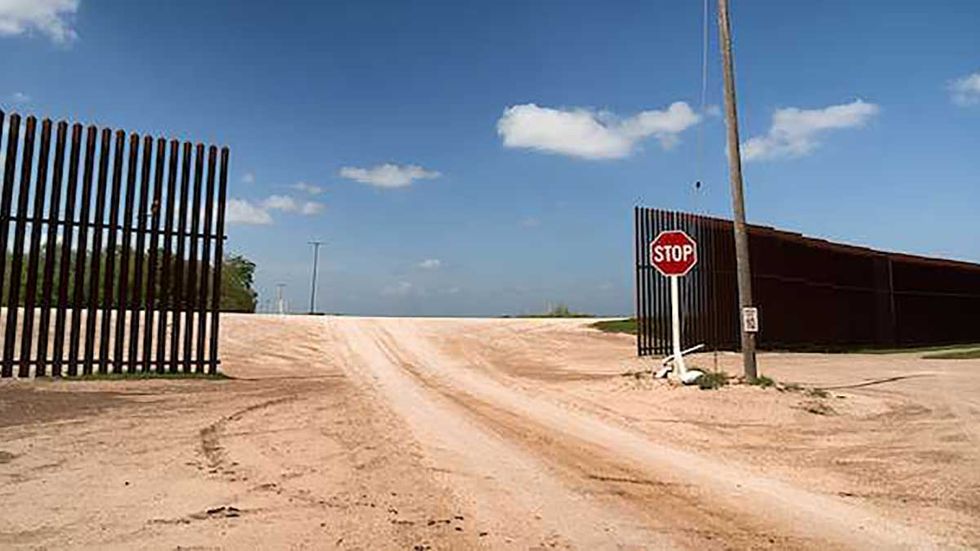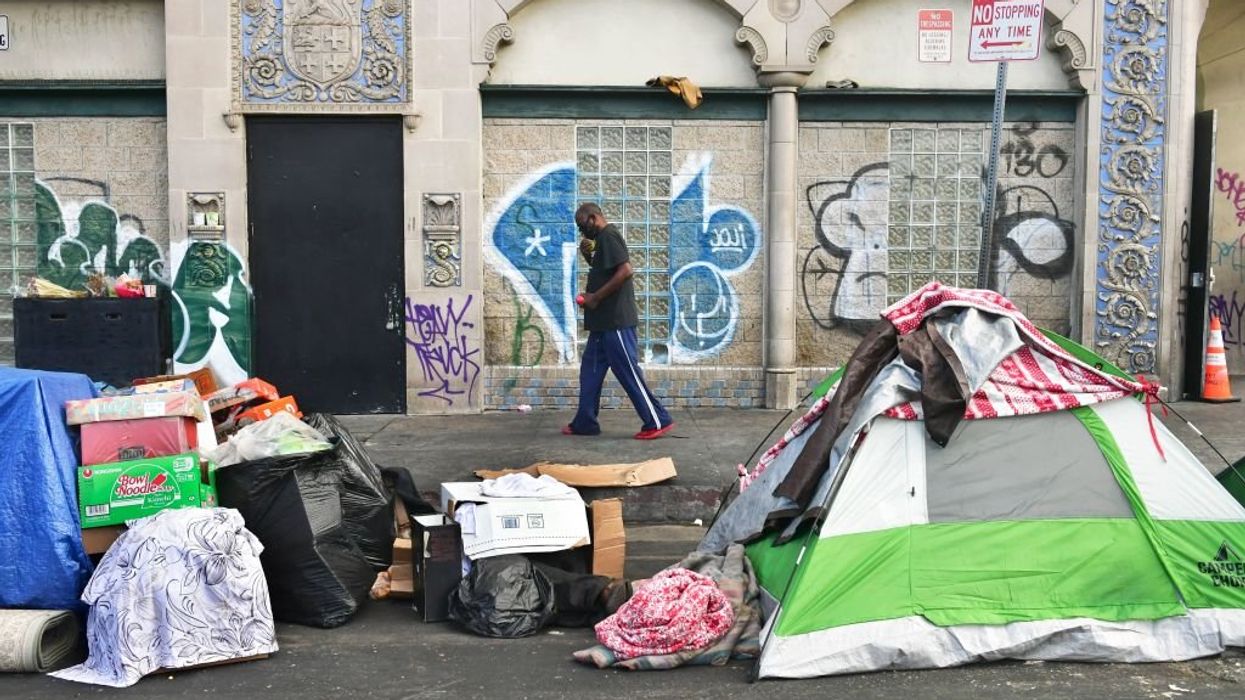
© 2024 Blaze Media LLC. All rights reserved.
Editor’s note: In light of today’s news that President Trump will begin constructing the border fence along our southern border, we are reposting this article, which was originally published in August 2015, detailing the mechanics, effectiveness, and cost-benefit analysis of building such a fence.
Yes, border fences work. And that is exactly why the political class is so stridently intent on opposing the construction of a full double-layered fence or any effective barrier at the border.
The bipartisan open borders cartel is all in favor of discussing sundry forms of “border security,” especially if it will afford them the political cover to pass amnesty. But the one tangible form of border security they will never support, and, in fact, will pull out all stops to prevent, is the completion of the border fence.
Back during the 2016 Republican primary, former Florida Governor Jeb Bush released his amnesty plan. In order to grease the skids for his amnesty proposal, Jeb released a “six point plan” for securing the border. The one thing that is missing, of course, was the completion of the double-layered security fence.
Border fences work … just look at San Diego and Israel
One of the most pervasive arguments against a border fence is the puerile nursery chant, “show me a 20-foot fence, I’ll show you a 21-foot ladder.” Even 2016 presidential candidate Rick Perry was oft to advance this intellectually dishonest argument. The problem is they can’t show us the 21-foot ladder. The border fence that conservatives are advocating has worked in San Diego and it has worked in Israel. It will work for much of the rest of the border.
For some geographical context, the southwest border with Mexico is roughly 2,000 miles long divided into nine “sectors” patrolled by U.S. Customs and Border Protection. Here is a list of the border sectors and their size, listed from west to east (Pacific Coast to Gulf Coast):
San Diego (60 miles)
El Centro (70 miles)
Yuma (126 miles)
Tucson (262 miles)
El Paso (268 miles)
Big Bend (510 miles of river-front border)
Del Rio (210 miles of river-front and lake-front border)
Laredo (171 river-front miles)
Rio Grande Valley (320 river miles)
Following the first great wave of illegal immigration post-1986 amnesty — which primarily came through the California-Mexico border — Congress passed a bill in 1996 to require construction of a double-layered fence (triple-layer in some places) in the San Diego corridor along the coast. You can see a picture of the fence with razor wire here. By the end of the decade, apprehensions fell by 95% as illegals moved eastward, even though the fence covered only 14 miles of the 60-mile sector. The majority of this border sector, unlike most other areas of the border, also has a tall and solid single-layer fence. While nothing is foolproof, fences clearly work and take much of the pressure off the border patrol to keep up with the flow.
IN 2006, after much foot-dragging from the Left Congress passed a bill requiring the construction of a 700-mile double-layered fence along five stretches of the border most appropriate for fencing (watered down from the original proposal of 850 miles). As of October 2014, only 36.3 of the 700 miles of double-layered fencing were constructed, as required by the 2006 Secure Fence Act.
You will hear a talking point from the Left that 652 miles of fencing have been completed, but most of those fences are easily penetrable or downright worthless. Roughly 299 miles are covered by simple vehicle barriers, of which more than half are constructed by temporary welding materials that are dilapidated [EMBED: “Temporary Vehicle Barrier” picture here page 22 of PDF].
Even the 352.7 miles of “pedestrian fencing” is a complete joke in most areas, as you can see from this picture. Many areas with these rudimentary fencing have known breaches that have been exploited by drug smugglers. Smugglers and traffickers routinely cut holes in these rickety fences and barriers that are large enough for drive vehicles.
Compare that to the 15-foot double-layered fence in the San Diego corridor and you will see why we need that version in other areas of the border. The Department of Homeland Security has gotten away with short-changing the fencing because Congress essentially gutted the Secure Fence Act in 2006, granting the DHS secretary discretion to waive the double-fence requirement and a number of deadlines. Consequently, the success actualized in the Yuma sector was never allowed to take root elsewhere.
The Yuma sector contains most of the remaining double-layer fencing with razor wire, including areas with triple layers and a 75-foot “no man’s land.” Not surprisingly, it has worked. Apprehensions have declined 96% since 2005 — falling from 138,438 to 5,902 in fiscal year 2014. And again, the double-layer fencing in Yuma and San Diego only cover a fraction of the sector. But they also have other areas with solid single-layered fencing. The other border sectors containing a sizable amount of effective single-layer fencing are El Centro and El Paso, and they have seen a dramatic decline in border crossings as well, although they are not as locked down as Yuma.
Imagine if those fences were constructed in the Rio Grande, Laredo, and Tucson sectors. Those sectors have the fewest miles of fencing (aside from the rugged river sectors of Big Bend and Del Rio, which are hard to cross). Not surprisingly, they are the biggest trouble spots.
We don’t need 2,000 miles of double-layered fencing, but 700 miles worth — in conjunction with cheaper, yet sturdy, single-layered fencing in areas more easily controlled by agents and other assets — will get the job done. It will certainly stop mass smuggling and free up the border agents to concentrate on the toughest parts of the border.
The Israel paradigm
Nowhere is the case for the double-layered security-style fence more compelling than with the Israel security fence. Between 2000 and 2005, suicide bombers infiltrated Israel almost on a daily basis. Over 1,000 Israelis were killed and countless thousands wounded — the equivalent of 42,000 fatalities and hundreds of thousands wounded in America if extrapolated from the population size. The situation was desperate … until Israel built a security fence. After construction of the fence, a double-layer barrier with a security zone in the middle — similar to the San Diego fence, suicide attacks perpetrated by Arab terrorists declined by well over 90%.
Saudi Arabia is now taking a page out of Israel’s security plan and is constructing a similar fence along their border with Iraq.
It has been said that no fence can stop the determination of illegal immigrants seeking job prospects or drug running and human trafficking opportunities. But nobody is more determined than Hamas terrorists willing to die for their cause of killing Jews. While nothing is foolproof, the double-layered security barrier stopped the terrorists; it will stop illegal immigration.
A plain old fence breaks the political barriers to security
More important than the fact that security barriers are the only proven means of stopping infiltrations is that it solves the root of the immigration problem: politics. The crisis with illegal immigration is not some natural disaster that is simply immune to common sense solutions. It has been encouraged and fostered by our government and political-media-corporate class as well as the Mexican government. Illegal immigration is a man-made crisis. It can only be solved with a solution that is out of reach of the insidious saboteurs in government.
Illegal immigration, at its root, is not a policy problem; it’s a problem of malfeasance in government. The past few administrations have simply refused to enforce existing law, culminating with President Obama’s wholesale nullification of immigration laws. Sure, in theory we can secure the border with smart fencing, sensors, drones, and border agents alone. Proponents of open borders point to the fact that the border patrol has tripled over the past two decades, yet have failed to secure the border. But what good are these assets if they are subject to “prosecutorial discretion?” What good are border agents if they are punished for doing their job and are transformed into social workers who manage and help illegal immigrants instead of stopping them?
In December of 2014, the DHS Inspector General released a report showing how the Obama administration misused the funding and assets for drone technology and did not deploy them in all of the areas they were supposed to patrol. It’s literally the fox guarding the henhouse.
An impervious, fixed, plain, dumb, ugly fence solves the core problem. A dumb fence is not smart enough to be manipulated by those who support illegal immigration. It cannot be turned off and regulated. It does not discriminate. It works.
Cost-benefit analysis of the border fence
Will a border fence cost money? Will it look aesthetically unpleasing in some places? Sure, but the cost of illegal immigration on our welfare, education, hospitals, criminal justice system, highway safety, drug violence, and culture is incalculable and infinite. And the sight of dead bodies and drug smugglers is more offensive than a security barrier.
The 245-mile border fence along Israel’s southern border with the Sinai Peninsula cost $450 million, averaging $1.8 million per mile. Assuming the completion of our security fence would cost the same amount, the total tab would come in at just under $2 billion. Even if we use higher estimates of $9 million per mile, as estimated by DHS for the cost of the San Diego fence, the total cost would amount to roughly $6 billion for the project.
Now consider the cost savings of each illegal alien inhibited from entering the country. According to a conservative estimate by Robert Rector of the Heritage Foundation, for every illegal alien that returns home (or is prevented from crossing the border), taxpayers save $700,000. That means we would reach the break-even point after preventing just the first 8,500 illegal immigrants from crossing. Moreover, the cost of other assets that don’t work or are manipulated by the political management will surpass the cost of the border fence. Having the fence as a force multiplier will decrease the need for other assets.
Ideally, we should not need a full security fence at our southern border. As Moses observed when the Jews were conquering the land of Canaan, the weaker cities were the ones encompassed by a wall while the stronger ones were confident in their prowess for defense. And indeed, if we had a country that actually enforced our laws, cut off the magnets, and held the government of Mexico accountable for their violation of our sovereignty, we wouldn’t need a wall. But we are not a strong country at a political level. In fact, we have a weak and malfeasant governing class. We therefore need a border fence.
Editor's note: This piece has been updated to correct a typographical error.
Daniel Horowitz is a Senior Editor of Conservative Review. Follow him on Twitter @RMConservative.
Want to leave a tip?
We answer to you. Help keep our content free of advertisers and big tech censorship by leaving a tip today.
Want to join the conversation?
Already a subscriber?
Blaze Podcast Host
Daniel Horowitz is the host of “Conservative Review with Daniel Horowitz” and a senior editor for Blaze News.
RMConservative
more stories
Sign up for the Blaze newsletter
By signing up, you agree to our Privacy Policy and Terms of Use, and agree to receive content that may sometimes include advertisements. You may opt out at any time.
© 2024 Blaze Media LLC. All rights reserved.
Get the stories that matter most delivered directly to your inbox.
By signing up, you agree to our Privacy Policy and Terms of Use, and agree to receive content that may sometimes include advertisements. You may opt out at any time.







